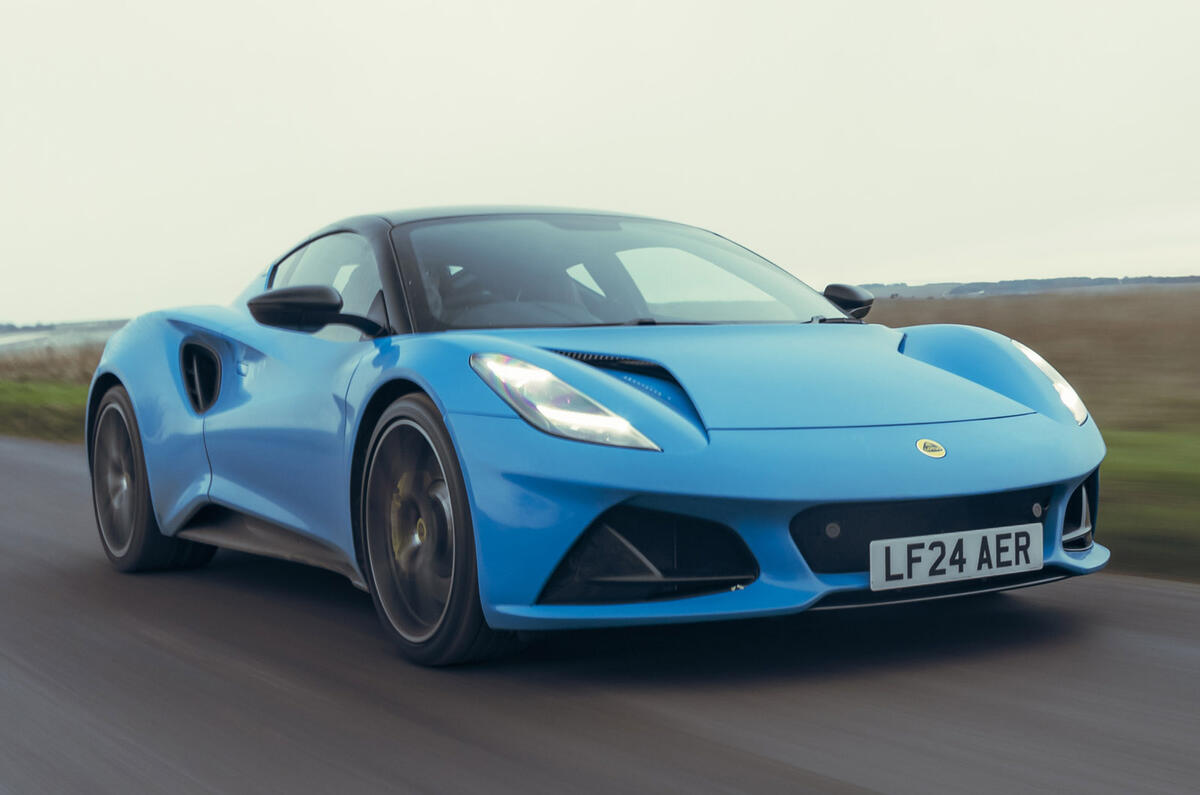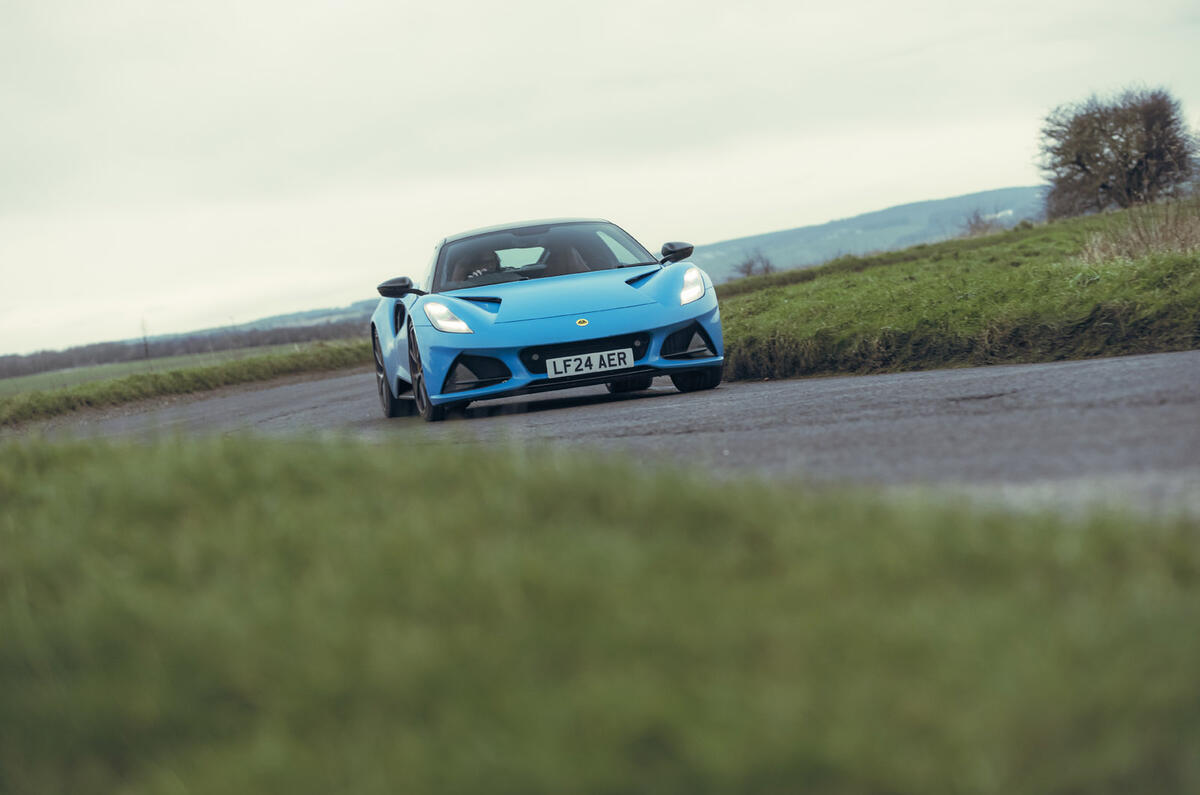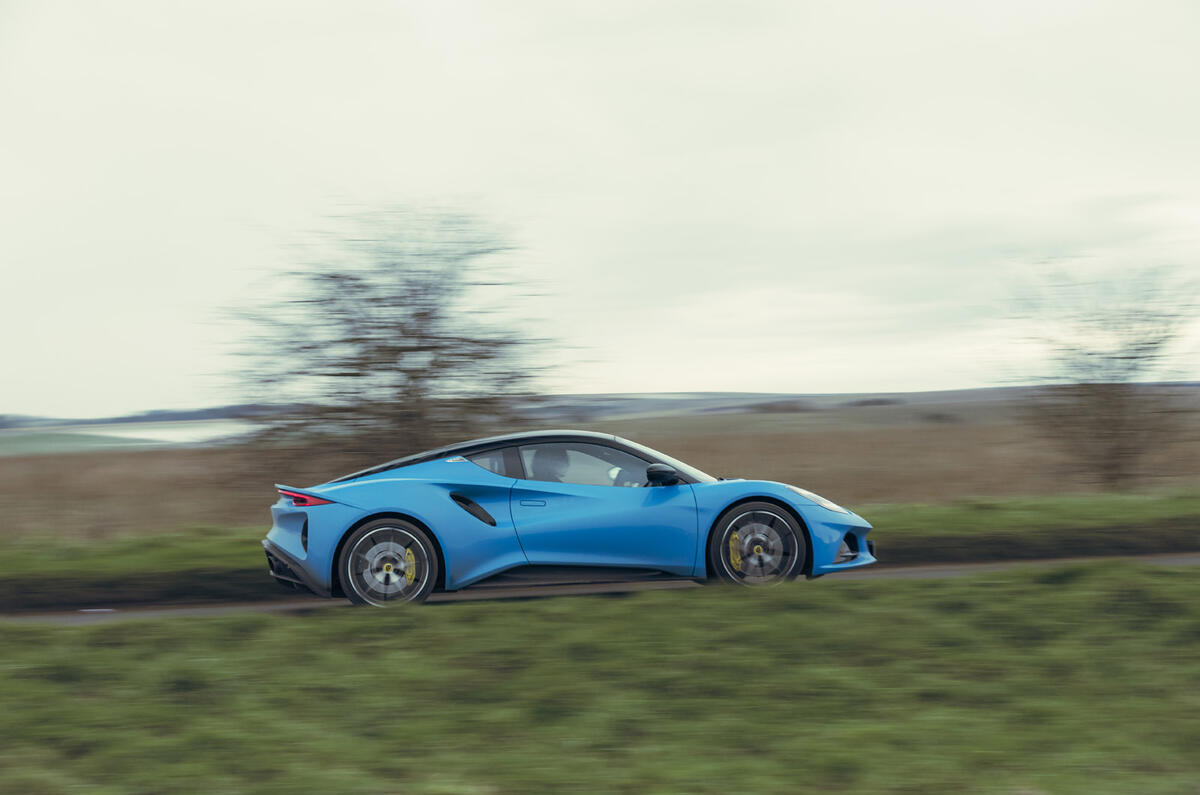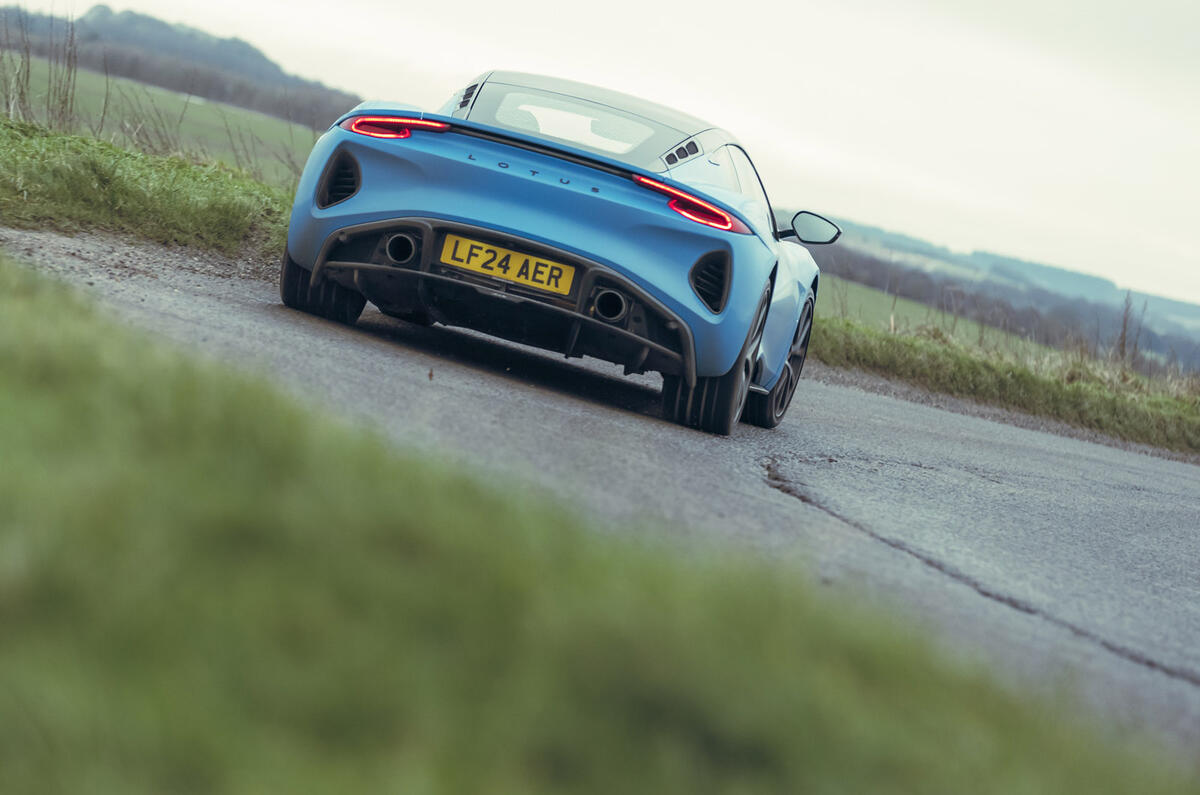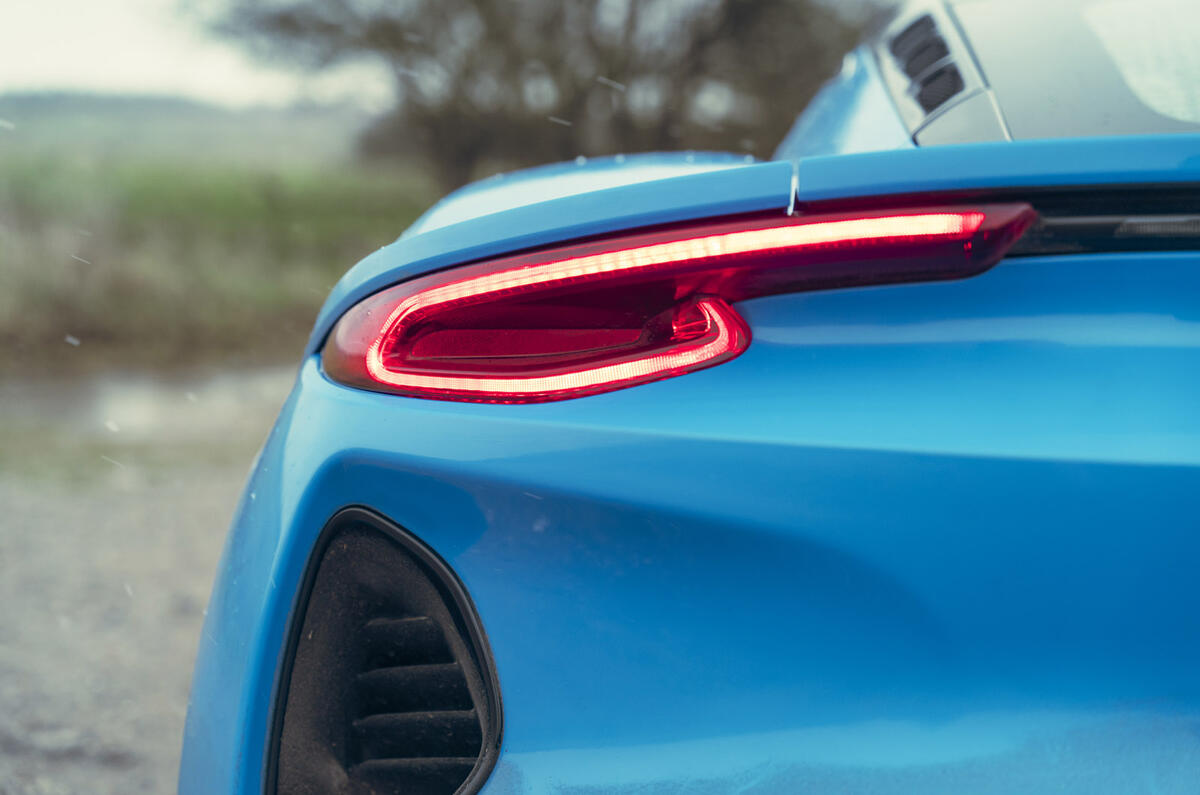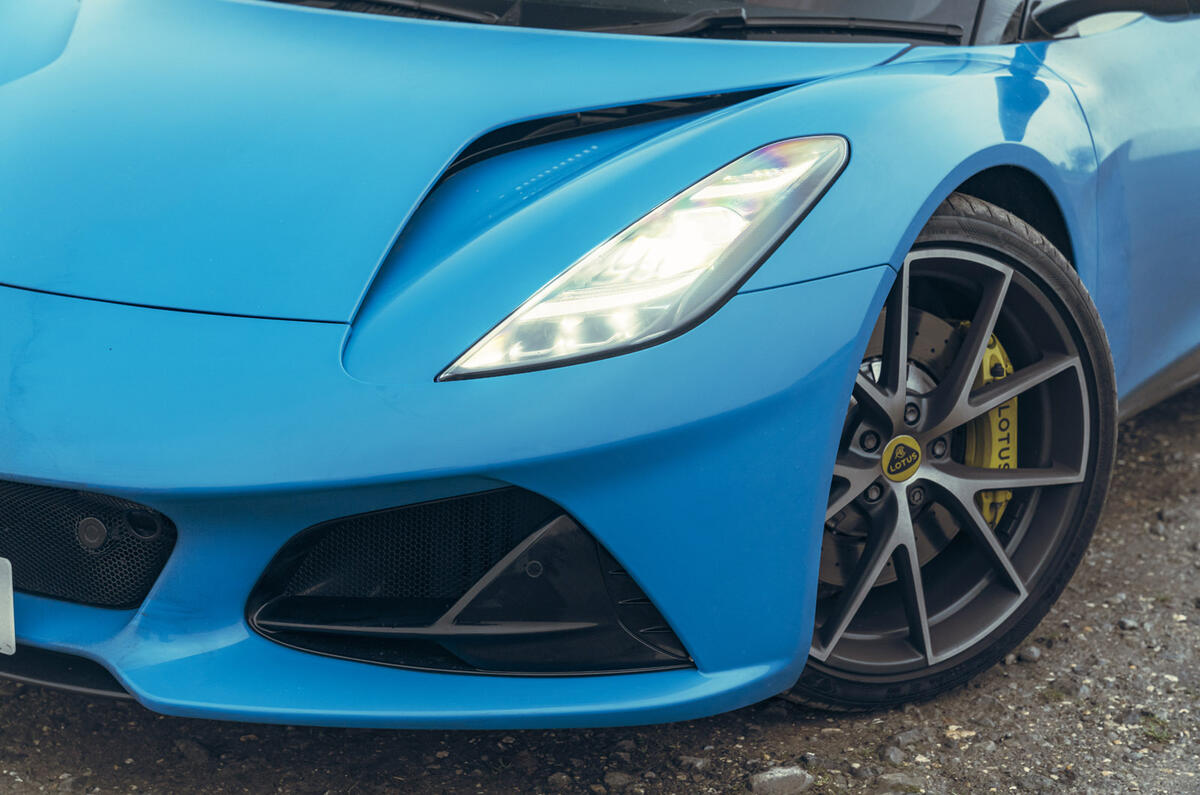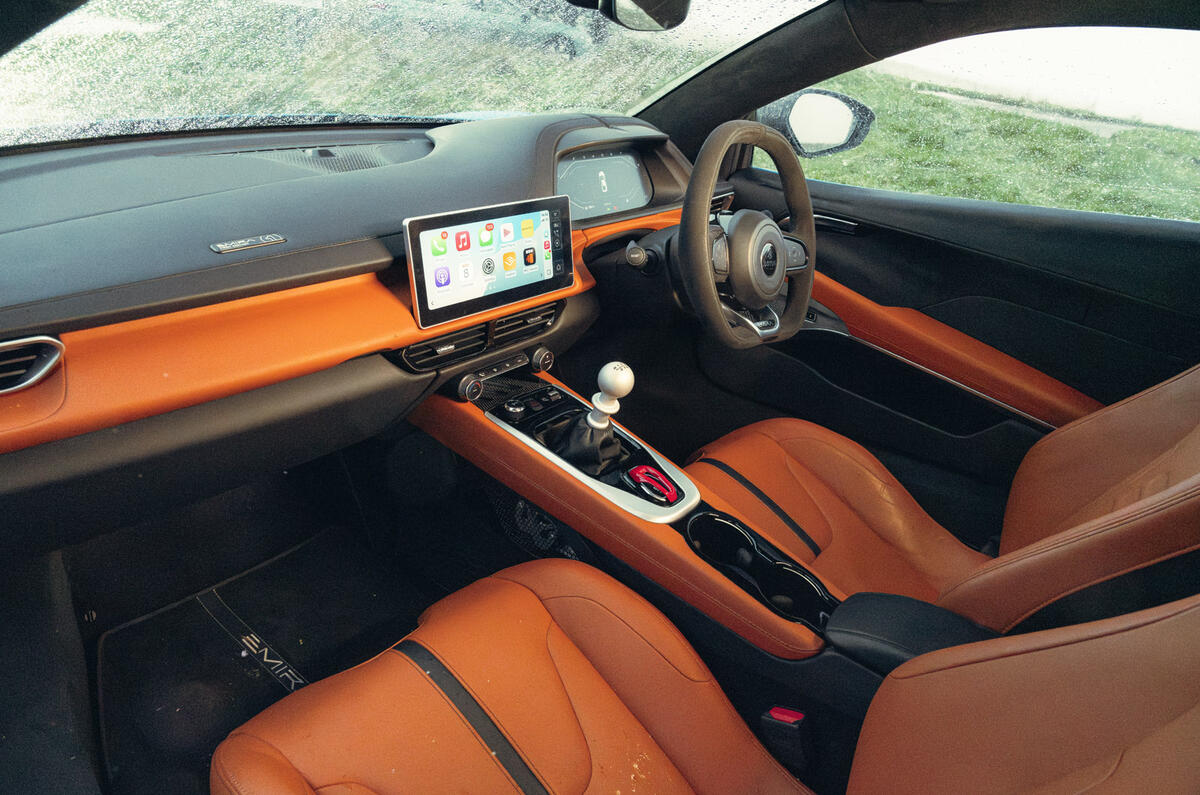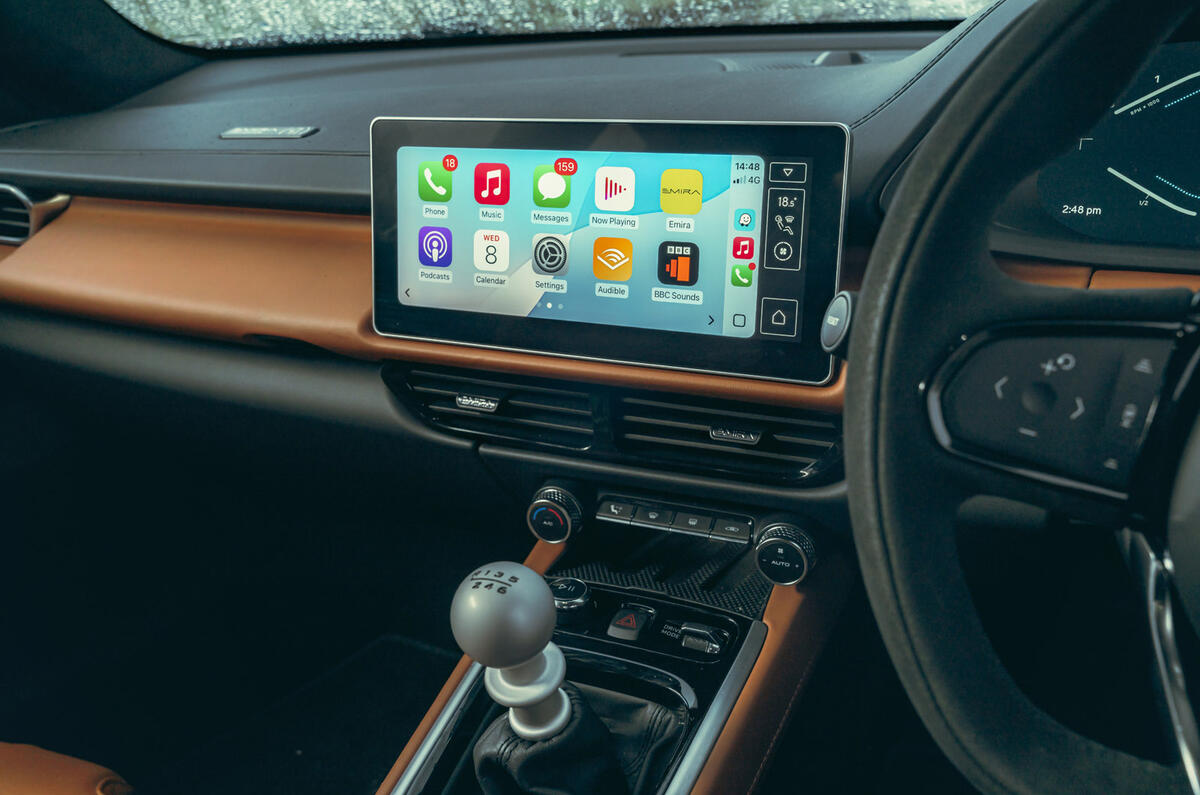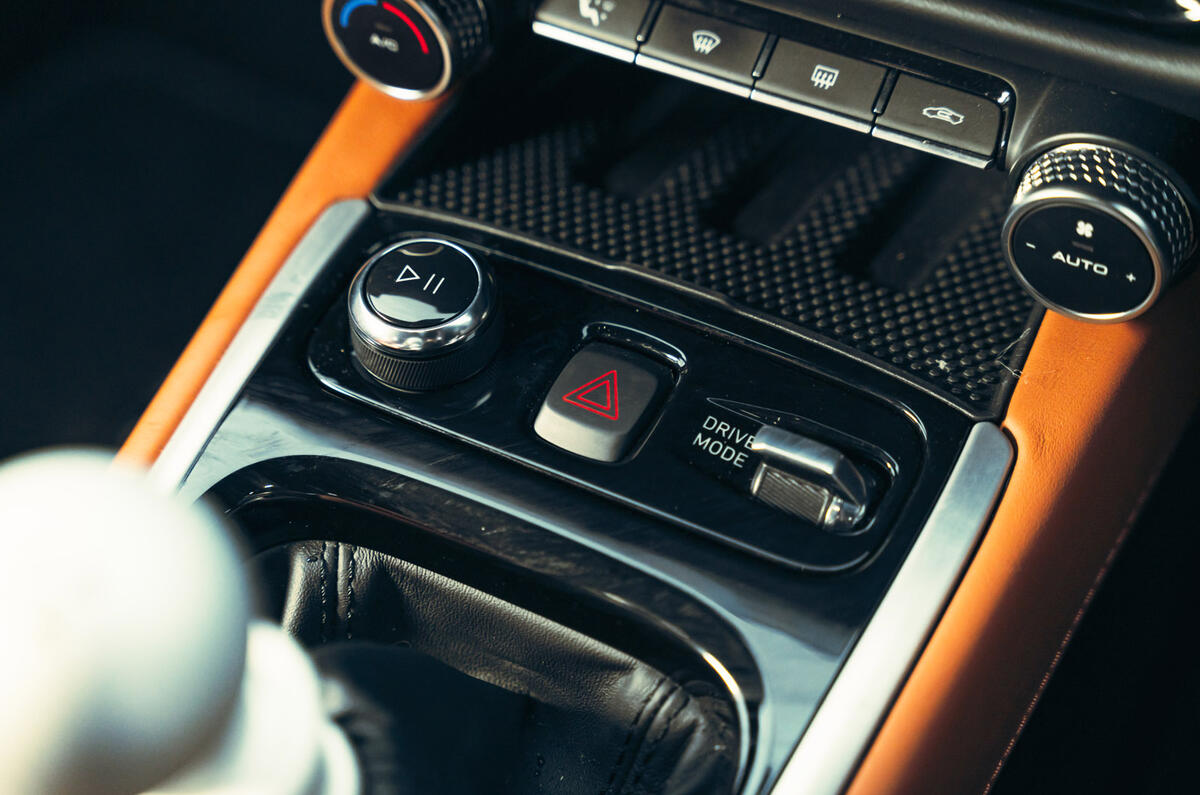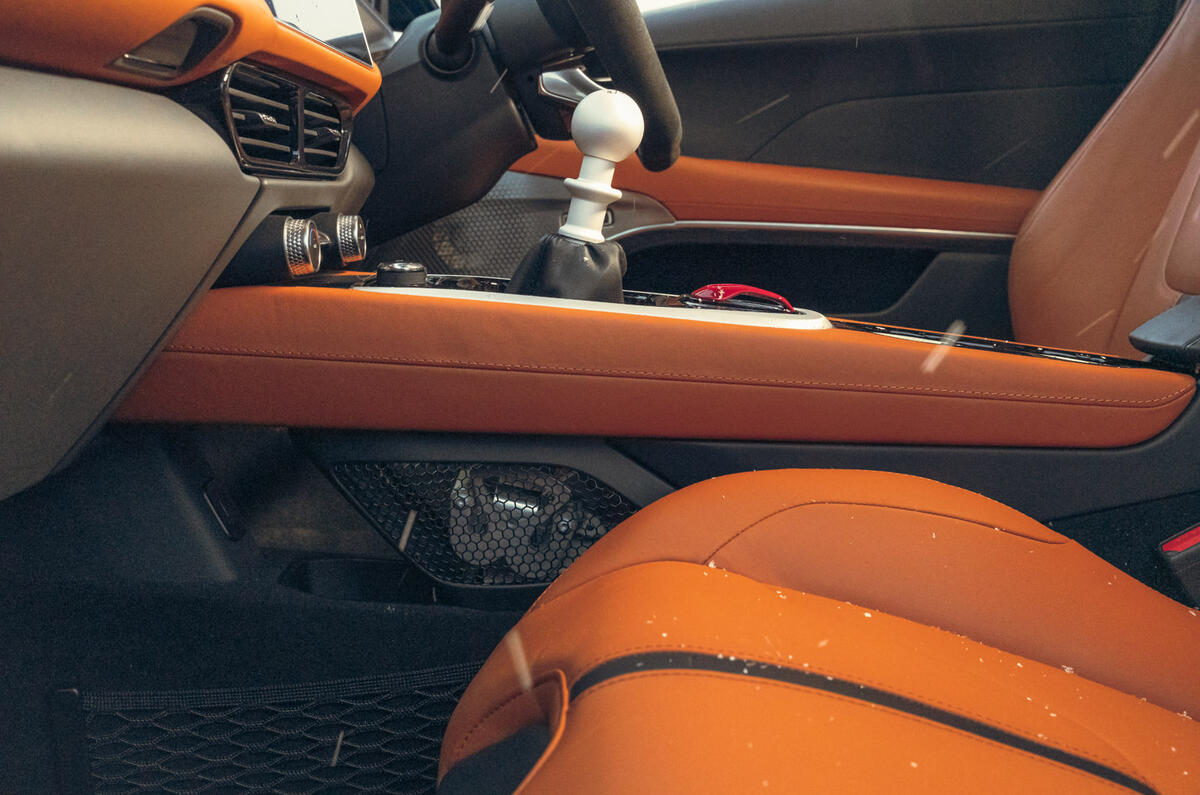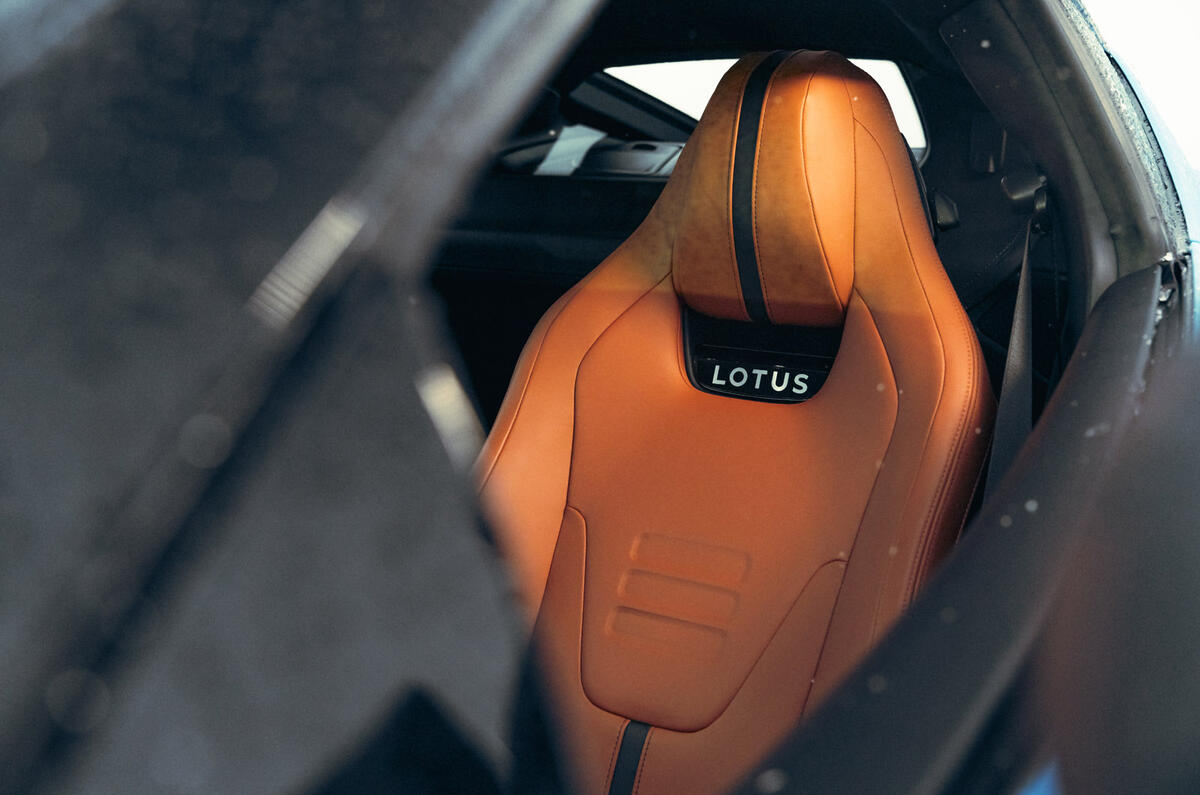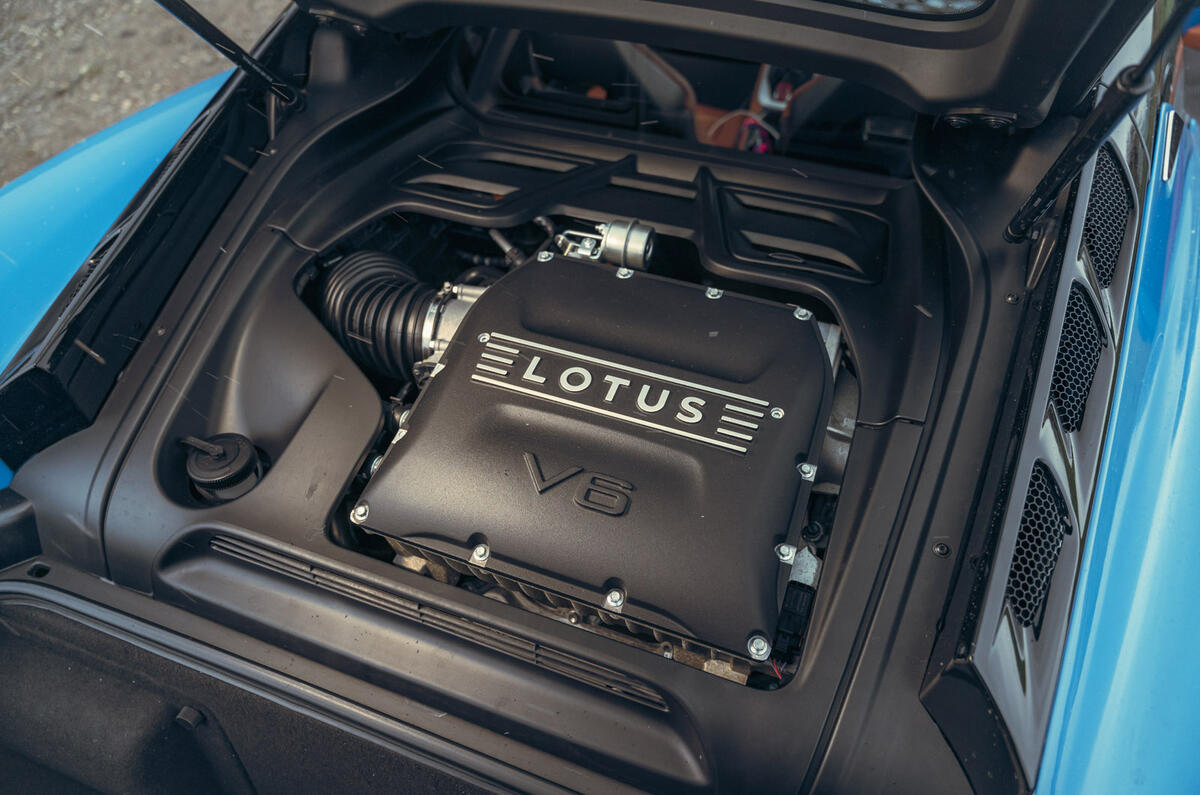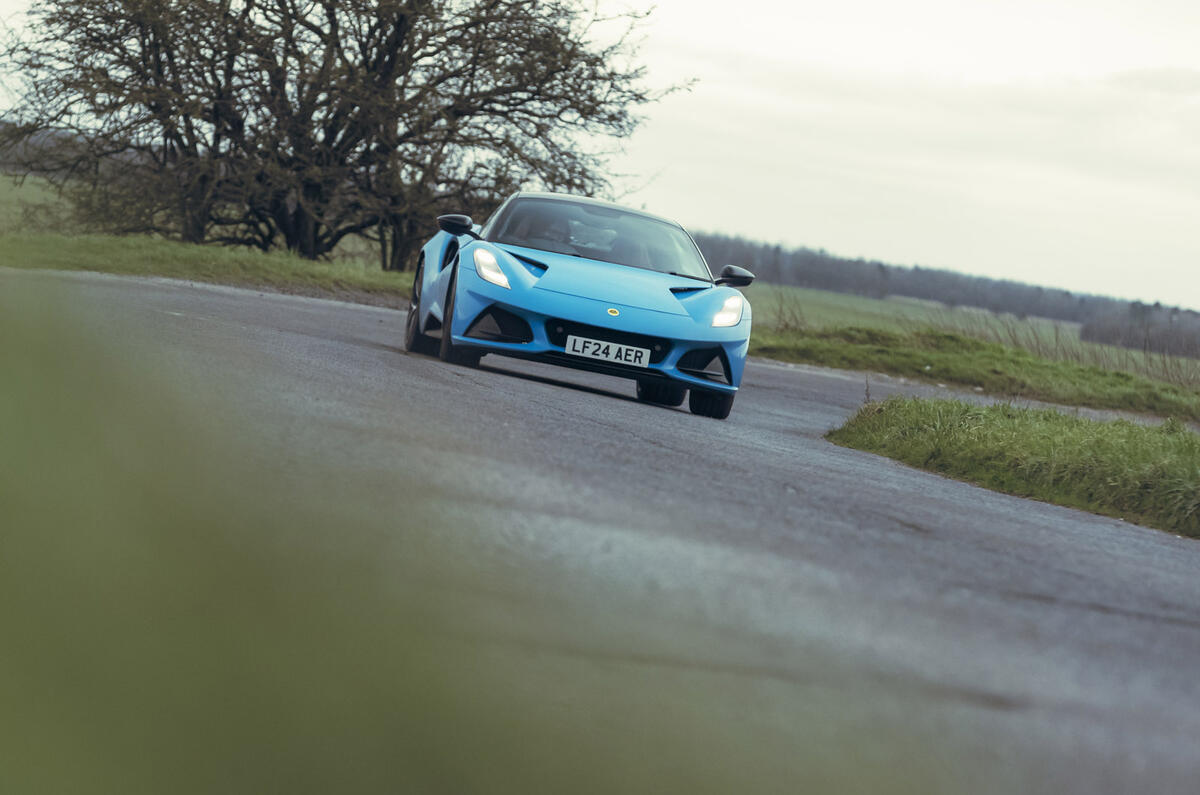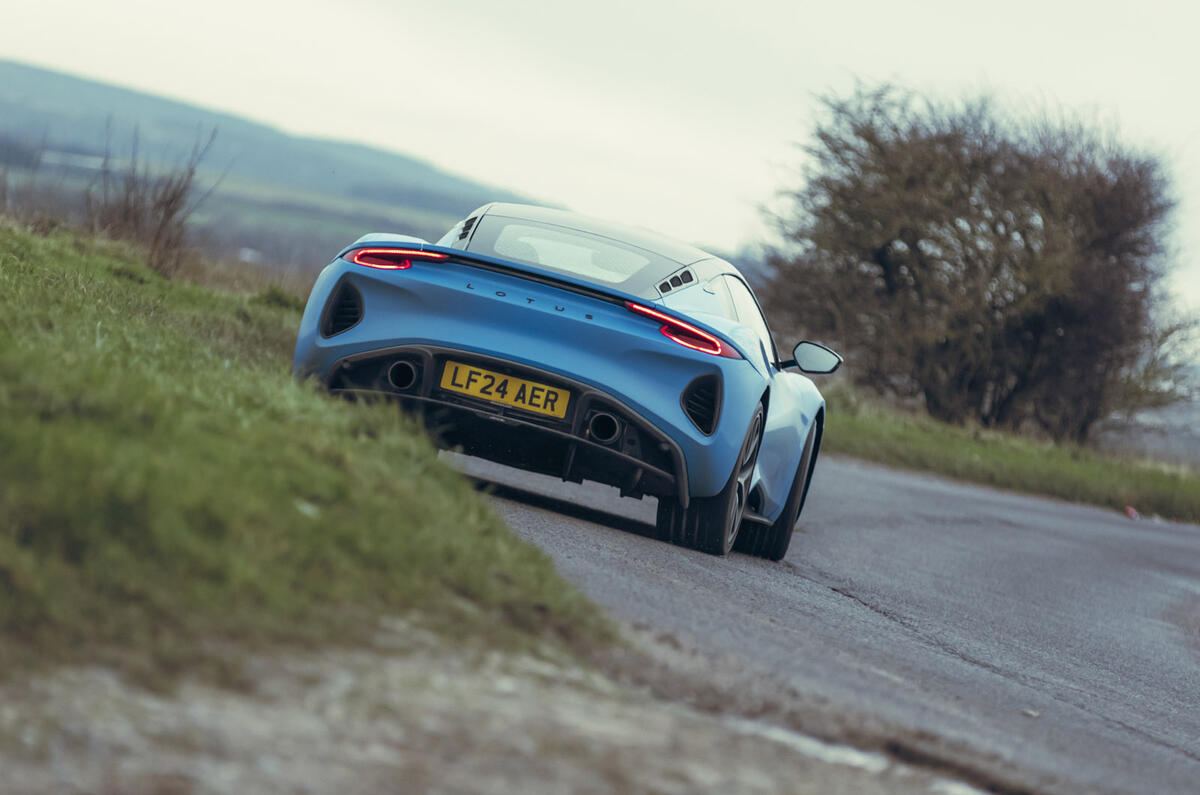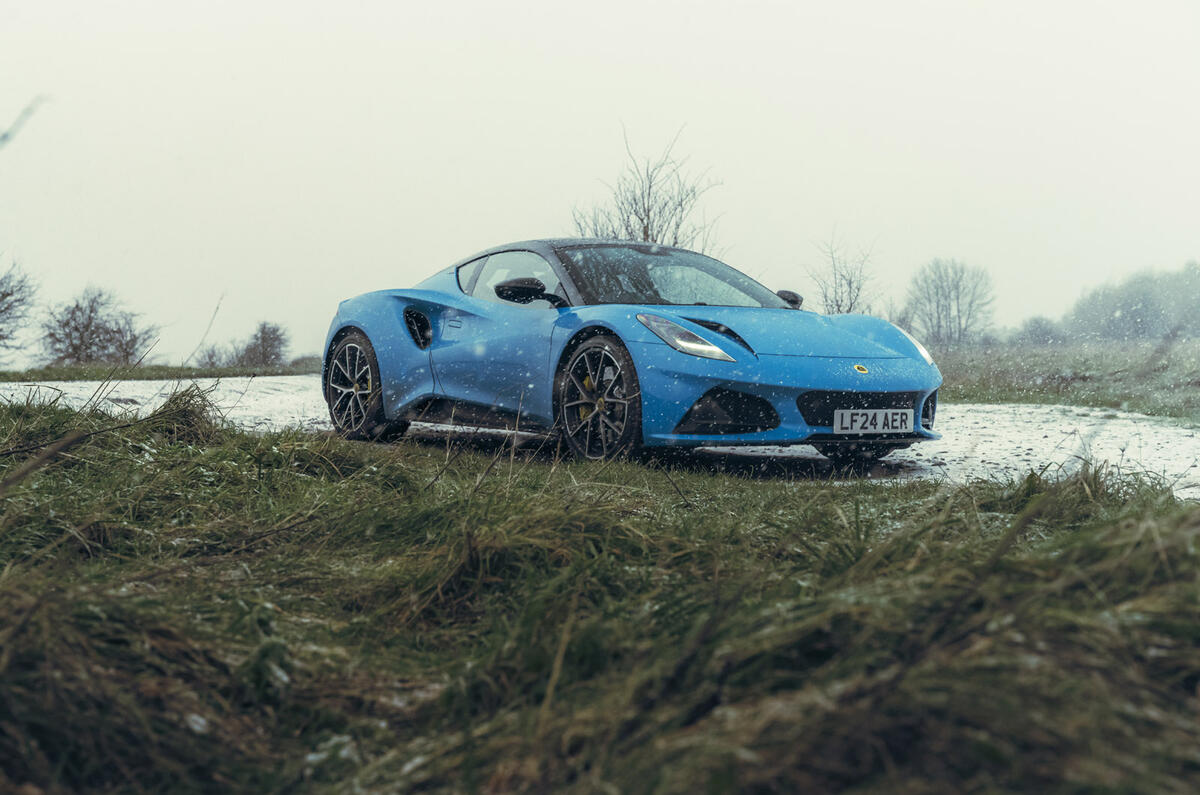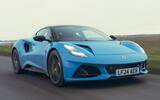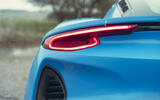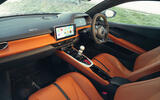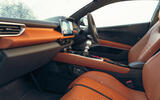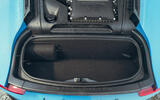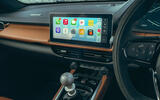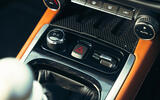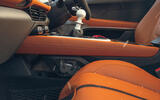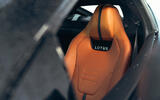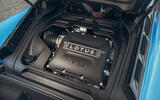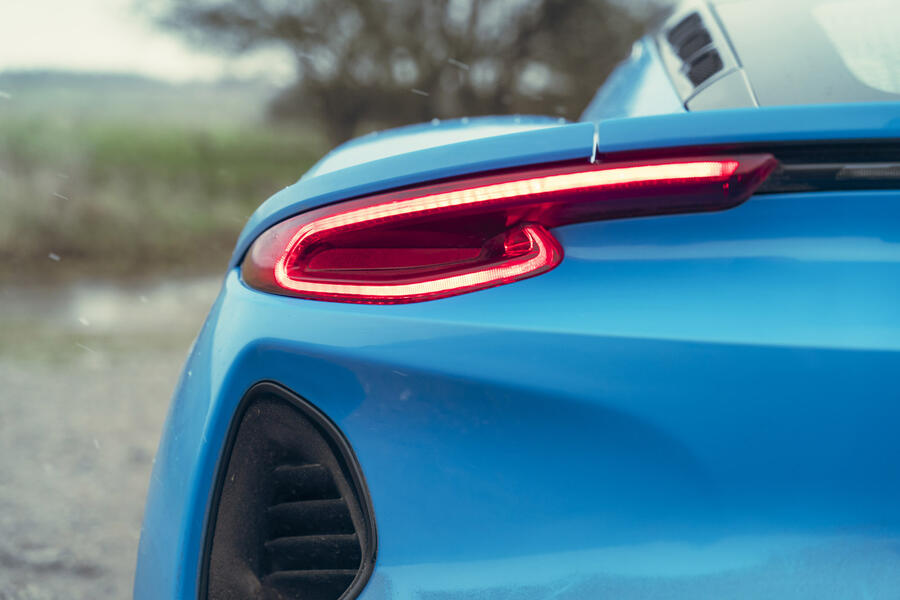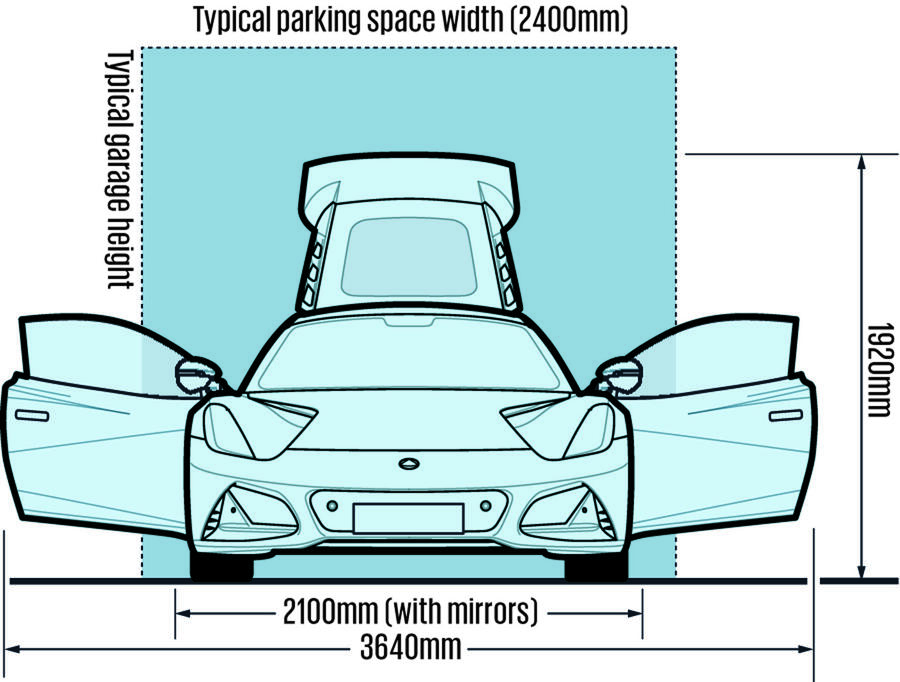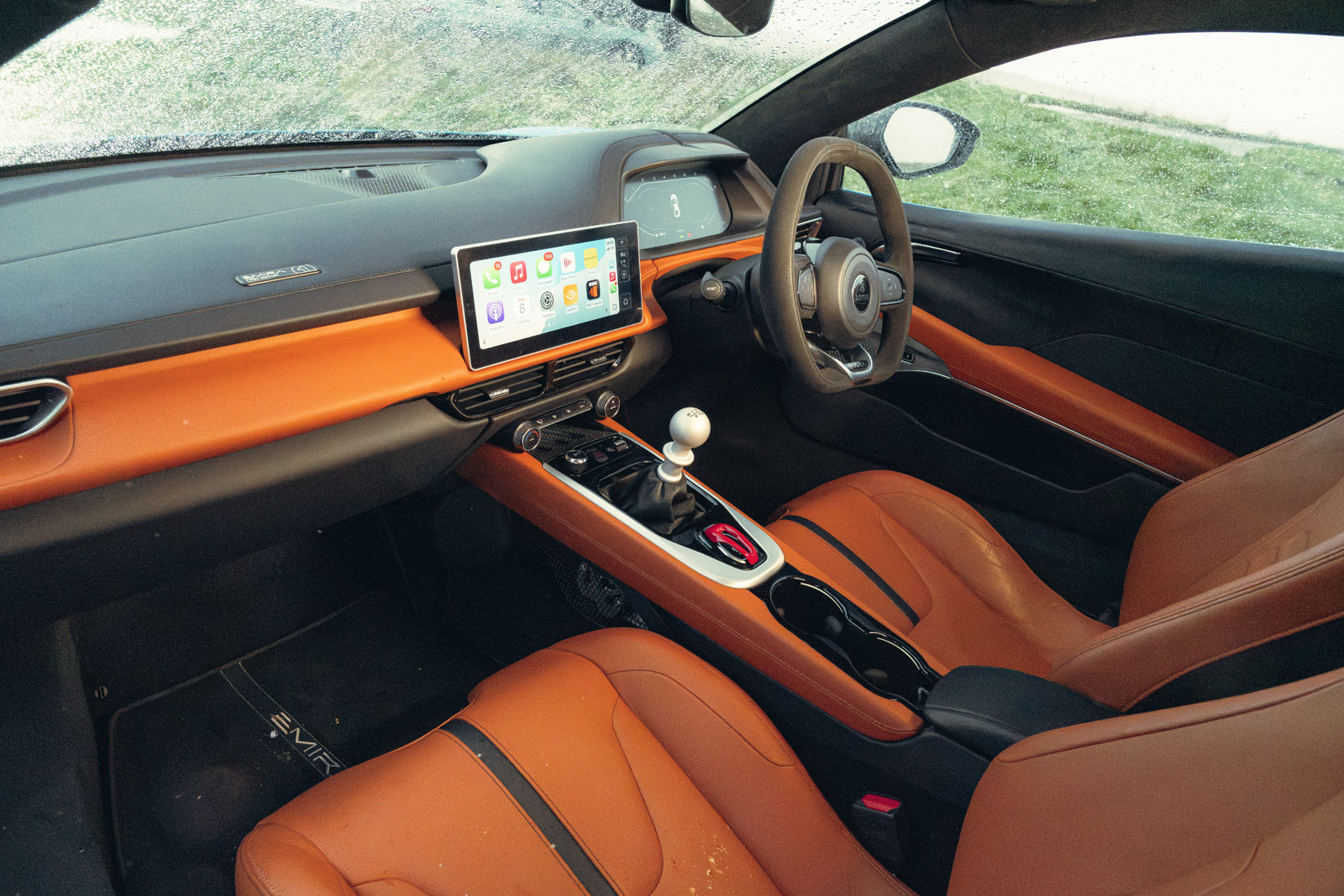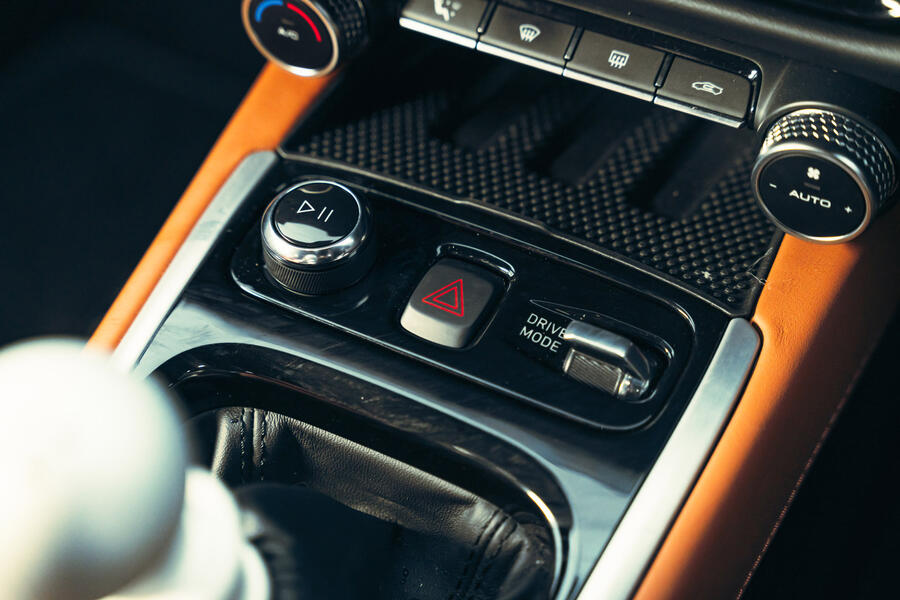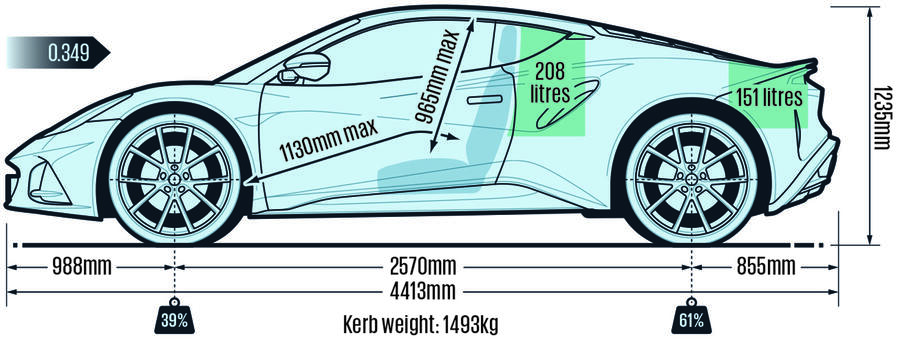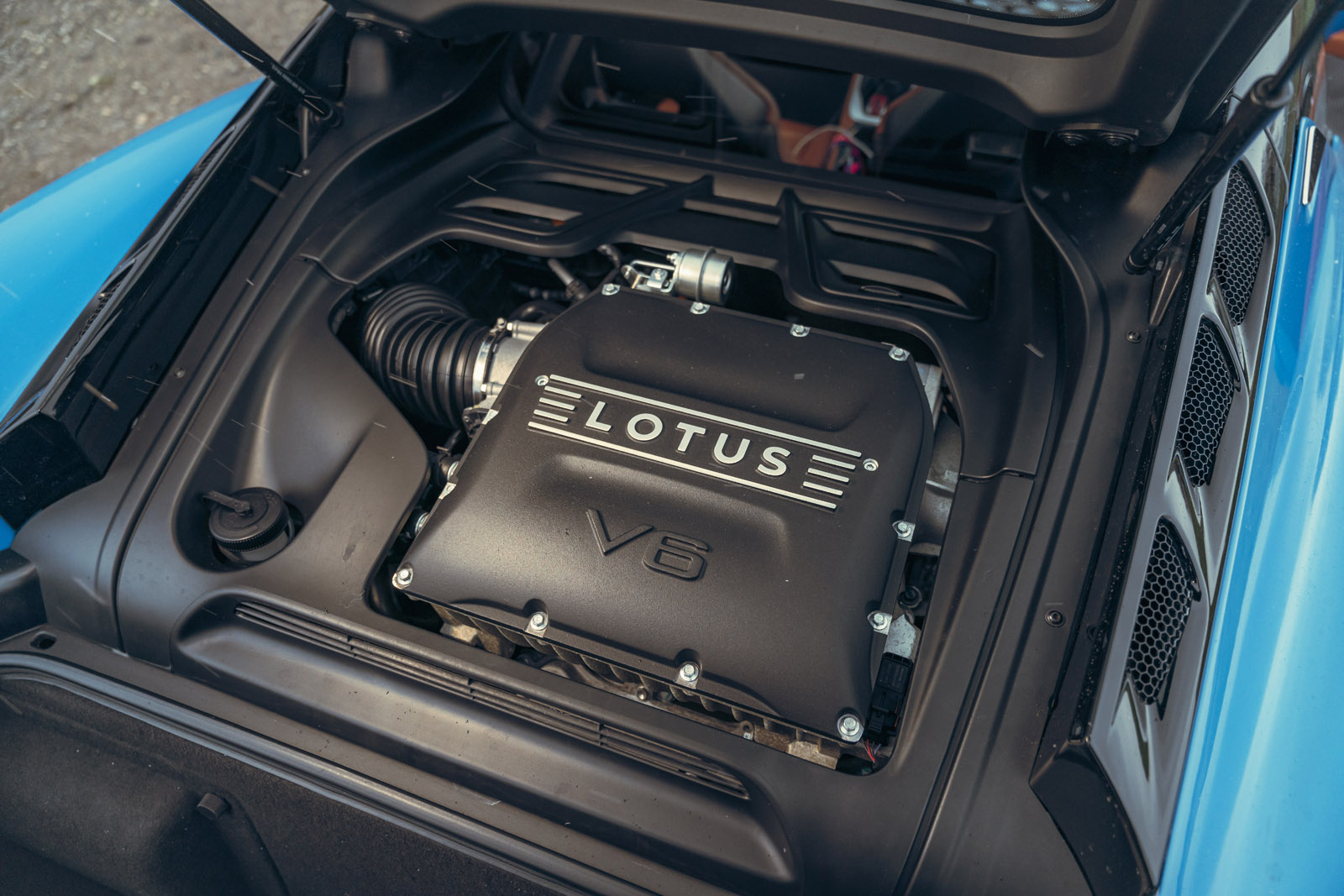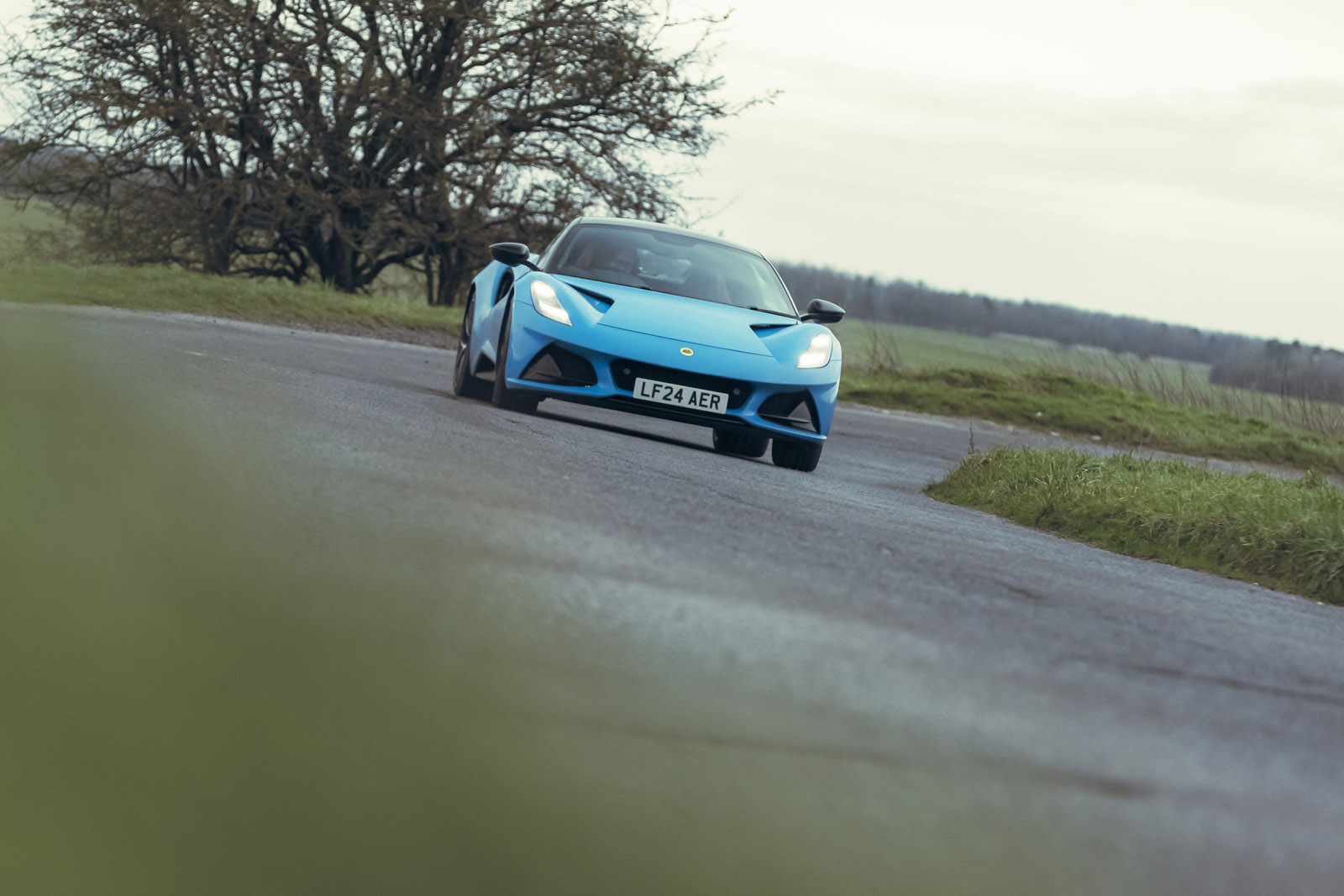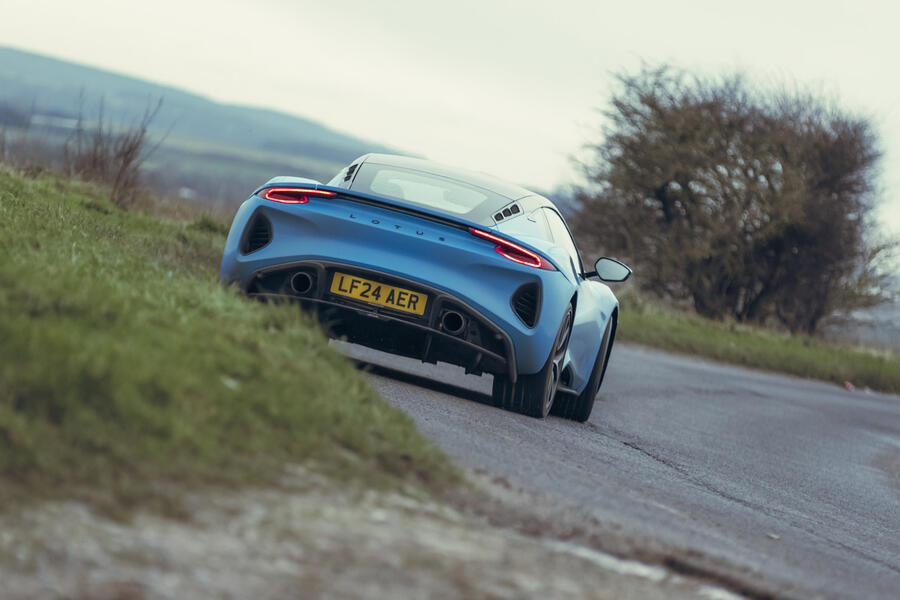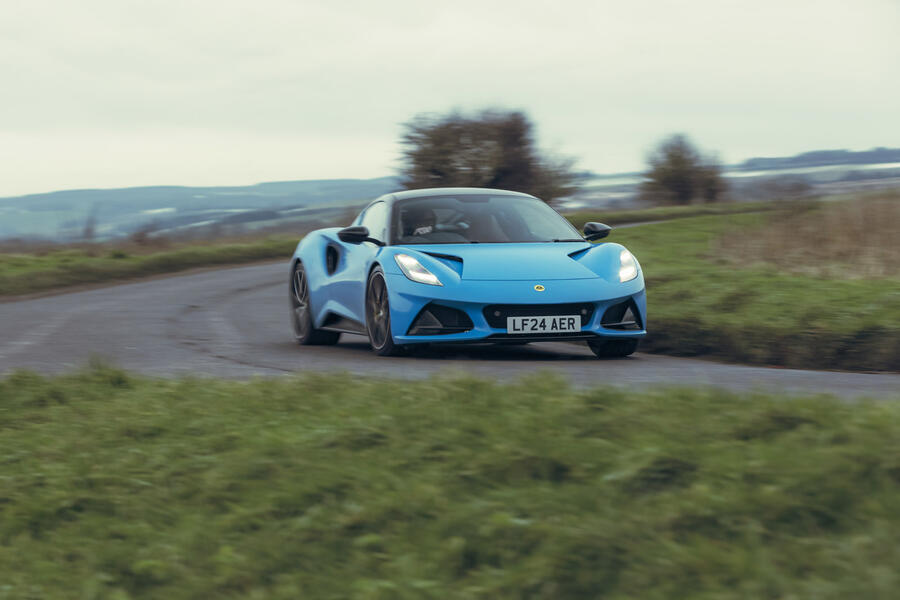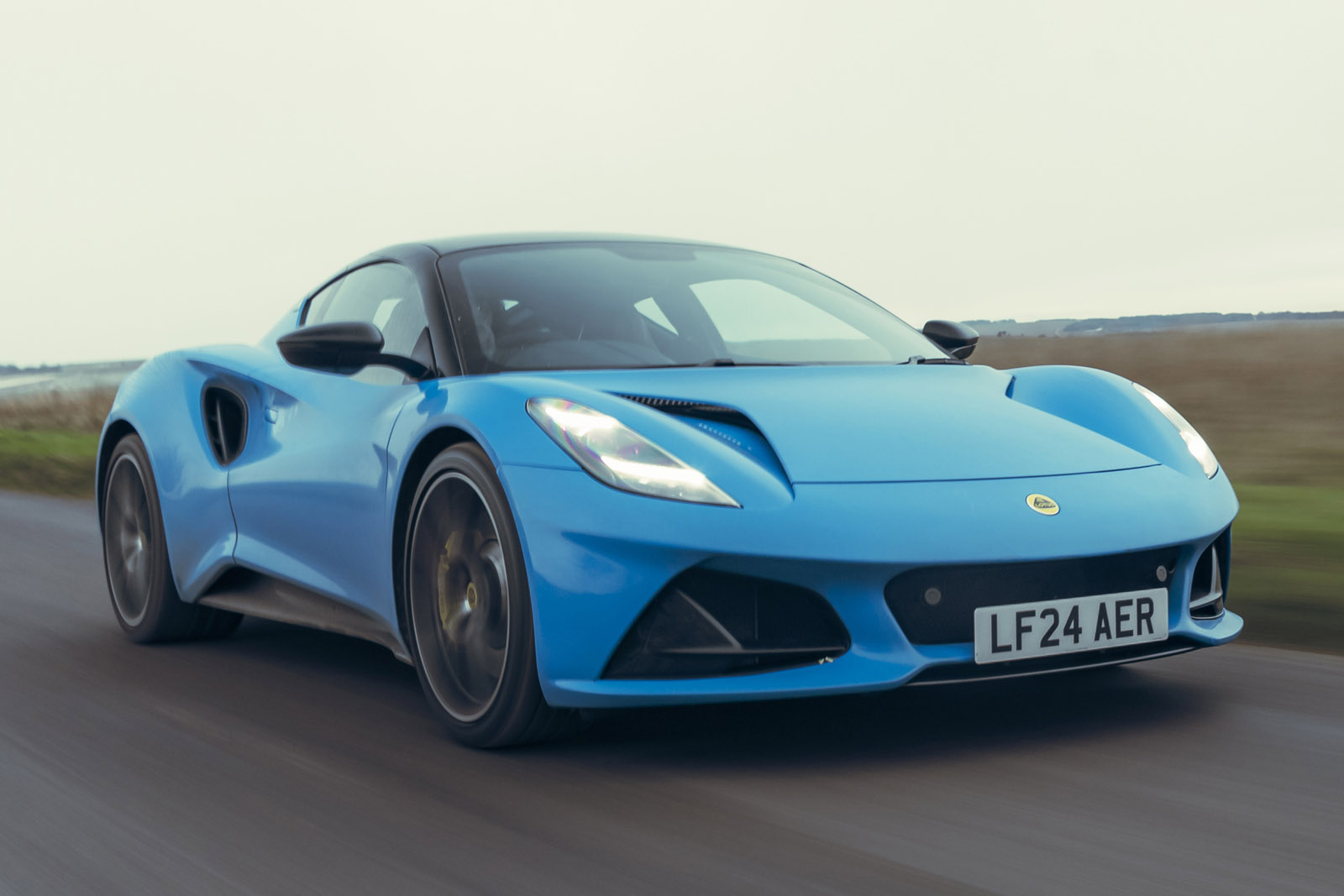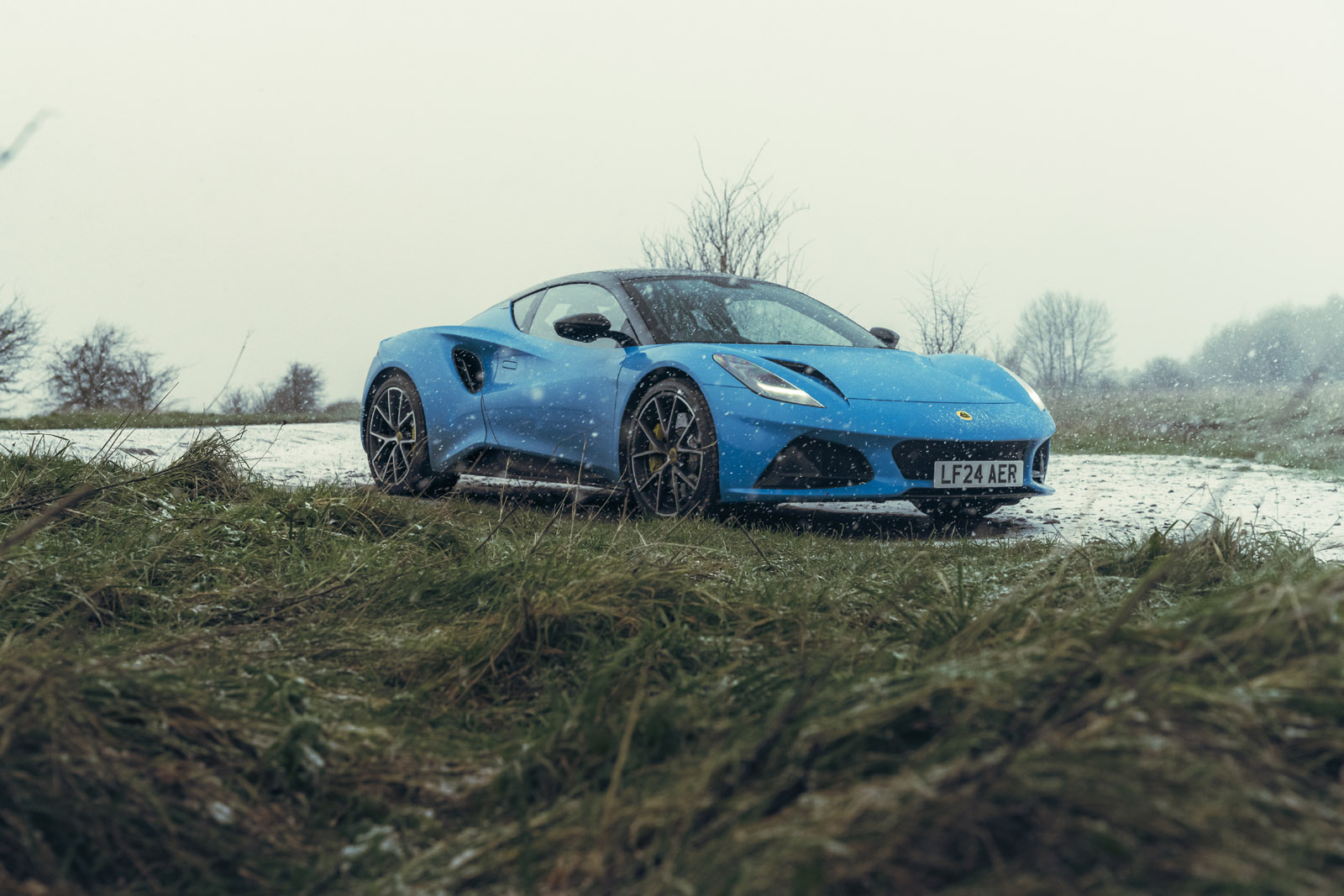You imagine a Lotus is all about the chassis, but by dint of being one of the last cars standing to have a six-cylinder engine (a supercharged one, no less) with a manual gearbox, the drivetrain is a compelling reason to buy an Emira. But be in no doubt that it is a constant presence, and depending on your leanings and what you will use the car for, that may be a good or a bad thing.
The V6’s fundamental origins are not as a pure-bred performance engine but as a fairly humdrum unit in US-market Toyotas. Combined with the mechanical whirring of the supercharger, that makes its voice at lower revs more industrial than, say, the pedigree sports car engine in a Porsche 718 GTS 4.0. You can always hear it working away even when cruising along on the motorway. Then again, the sense of mechanical interaction that gives garnered it plenty of fans on our test jury, particularly against a background of increasingly sanitised cars.
Get some revs on the tacho, and unmuffled by turbochargers it gains an unmistakably V6 character – bassier and less melodic than a Ferrari 296 or an old Alfa Romeo Busso, but very appealing nonetheless, and overlaid with the characteristic supercharger whine.
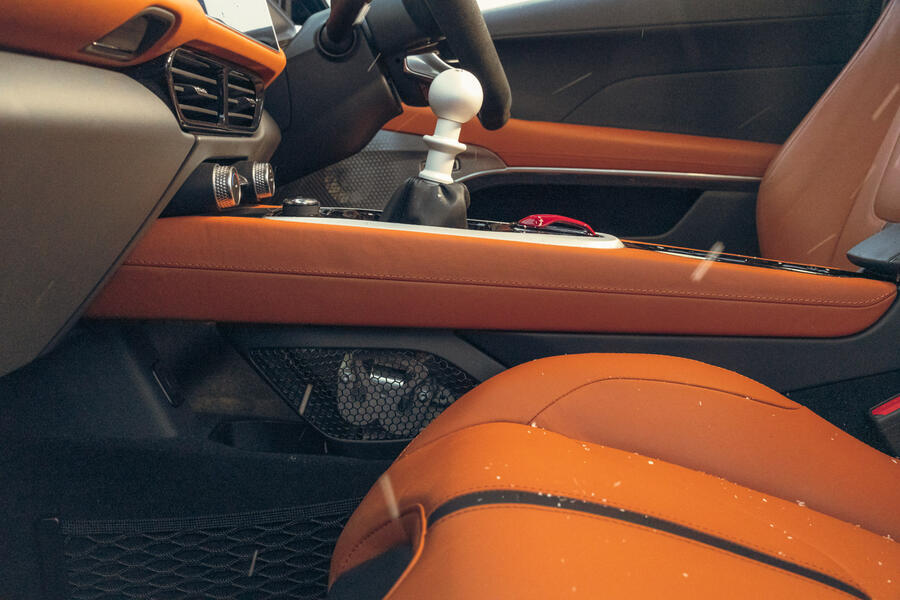
The six-speed gearbox defines the Emira’s driving experience possibly just as much as the engine. Partly because it’s one of few vaguely attainable manual performance cars left, and partly because the gearbox is a bit of a character.
If you’re a road tester trying to extract the fastest-possible standing start out of a manual Emira, you’ll hate it, because it doesn’t take kindly to being rushed. The manual doesn’t have launch control, so finding the sweet spot between bogging down the engine and lighting up the rear tyres is quite a challenge. Once it’s hooked up, slotting a higher gear in anger is a bit of a lottery: it might go in or it might baulk. The engine also seems to hit its limiter 200rpm before the indicated 7000rpm redline, sounding like it would be happy to continue to 7500rpm.
In the end, we got it to within three-tenths of the quoted 0-62mph time. That makes it slightly quicker than the manual BMW M2 (although that has had a 20bhp boost since we road tested it) and 0.4sec quicker from 30-70mph in fourth gear. Comparing the two clearly shows the effect of the Emira’s gearchange: every time it requires a shift (at 39, 73, 99 and 127mph), the M2 takes a chunk out of the Emira’s lead.



On the road, and even on track, it takes only a little familiarisation to find the pace where the gearbox is happiest. At that point, it becomes very precise and mechanical, with a throw that is neither too short nor too long. It requires a bit of finesse, but rewards you amply for it.
It makes the Emira a beautifully analogue car. It also leaves it up to the driver to manage the revs: there’s no automatic rev-matching, and the ECU doesn’t raise the revs to stop you from stalling when you lift the clutch like some manuals do. And that suits us fine, particularly since heel-toeing is so intuitive.
When we drove the pre-production car in 2022, we complained about a soft brake pedal that made rev-matching hard, but this issue was not present in our road test car. It can just be slightly touchy at low speed.




